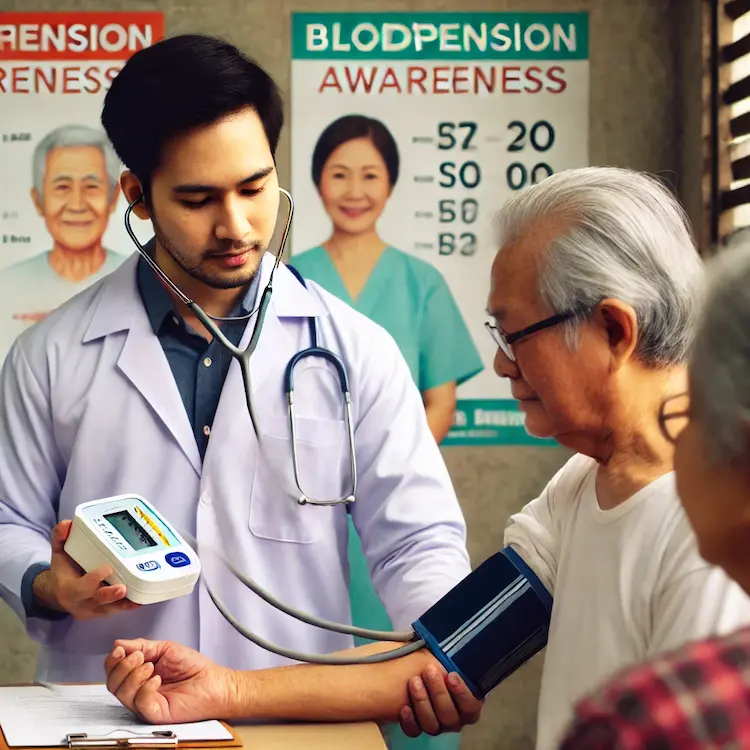High blood pressure (hypertension) is often called the “silent killer” because it can go unnoticed for years while quietly damaging the body. In The Philippines, where cardiovascular diseases are a leading cause of mortality, understanding the risks associated with uncontrolled high blood pressure is critical. This article explores the dangers of hypertension, its impact on Filipino society, and how Sphyg, a trusted supplier of clinically proven medical equipment, can help individuals monitor and manage their blood pressure effectively.
Why High Blood Pressure is a Serious Concern
Uncontrolled hypertension significantly increases the risk of life-threatening conditions, including:
- Heart Disease & Stroke – The Philippine Statistics Authority (PSA) reports that ischemic heart disease is the leading cause of death in the country.
- Kidney Damage – Chronic hypertension is a leading contributor to end-stage renal disease (ESRD) in The Philippines, where dialysis treatments are costly.
- Vision Loss – Hypertensive retinopathy can lead to irreversible blindness.
- Cognitive Decline – Studies link uncontrolled blood pressure to an increased risk of dementia.
Many Filipinos remain unaware of their hypertensive status due to limited access to regular check-ups, making reliable home monitoring solutions like Sphyg’s clinically validated blood pressure monitors essential.

Hypertension in The Philippines: Societal and Economic Impact
The rising incidence of high blood pressure has significant societal and economic implications:
| Factor | Impact |
|---|---|
| Healthcare Costs | Hypertension-related hospitalizations and medications place financial strain on Filipino families. |
| Work Productivity | Chronic conditions linked to hypertension contribute to workplace absenteeism and reduced efficiency. |
| Cultural Factors | High-sodium diets, fast food consumption, and sedentary lifestyles contribute to increased hypertension cases. |
According to the Department of Health (DOH), about 28% of Filipino adults have hypertension, yet many remain undiagnosed. The lack of early detection and treatment exacerbates health disparities in lower-income communities.
Monitoring and Managing Hypertension: A Comparison of Methods
There are several ways to track and control high blood pressure. Below is a comparison of different monitoring methods and how they contribute to better hypertension management:
| Method | Advantages | Limitations |
|---|---|---|
| Oscillometric Monitors (e.g., Sphyg’s BP Monitors) | Easy to use, provides digital readings, suitable for home monitoring | May require calibration over time |
| Mercury Sphygmomanometers | Highly accurate, used in medical settings | Requires professional training, mercury poses environmental hazards |
| Aneroid Sphygmomanometers | Portable, cost-effective | More prone to human error, requires regular calibration |
| 24-hour Ambulatory BP Monitoring | Tracks variations throughout the day, gives more accurate diagnosis | Expensive, not widely available in The Philippines |
Among these, Sphyg’s oscillometric BP monitors provide the most accessible and practical solution for home use, allowing Filipinos to track their readings consistently and seek medical intervention when necessary.

Practical Steps to Control Blood Pressure in The Philippines
Managing hypertension effectively requires a combination of lifestyle changes, medical intervention, and regular monitoring. Here’s what Filipinos can do:
-
Adopt a Heart-Healthy Diet
- Reduce sodium intake (avoid salty dishes like bagoong and processed foods).
- Increase potassium-rich foods (e.g., bananas, sweet potatoes).
- Incorporate fiber-rich meals (e.g., brown rice, leafy greens).
-
Stay Active
- Engage in at least 30 minutes of moderate exercise daily (e.g., brisk walking, dancing).
- Encourage workplace wellness programs to combat sedentary habits.
-
Monitor Blood Pressure Regularly
- Use clinically validated home BP monitors like those from Sphyg.
- Keep a BP log to identify trends and discuss with healthcare providers.
-
Manage Stress
- Practice relaxation techniques such as deep breathing, meditation, and prayer.
- Maintain a strong support system with family and friends.
-
Seek Medical Advice
- Never self-medicate—always consult a doctor before taking antihypertensive medications.
- Attend regular check-ups, especially if there’s a family history of hypertension.
Conclusion
Hypertension remains a major public health concern in The Philippines, impacting both individuals and the nation’s economy. The lack of awareness, cultural dietary habits, and lifestyle factors contribute to rising cases of uncontrolled high blood pressure. However, with proper monitoring using tools like Sphyg’s reliable BP monitors, along with lifestyle modifications and medical guidance, Filipinos can take charge of their health.
Key Takeaways
- Uncontrolled high blood pressure increases the risk of heart disease, stroke, kidney failure, and cognitive decline.
- Hypertension affects nearly 28% of Filipino adults, with many undiagnosed due to limited healthcare access.
- Sphyg’s oscillometric BP monitors provide an accessible and reliable solution for home blood pressure tracking.
- Lifestyle changes, including diet, exercise, and stress management, are crucial for maintaining healthy blood pressure.
- Regular medical check-ups and home monitoring can significantly reduce hypertension-related complications.
Actionable Recommendations
- Check your blood pressure regularly—use a clinically validated home monitor like Sphyg.
- Reduce salt intake and eat more heart-healthy foods to prevent hypertension.
- Stay active and manage stress through regular exercise and relaxation techniques.
- Consult a healthcare professional before taking any medication or making drastic lifestyle changes.


